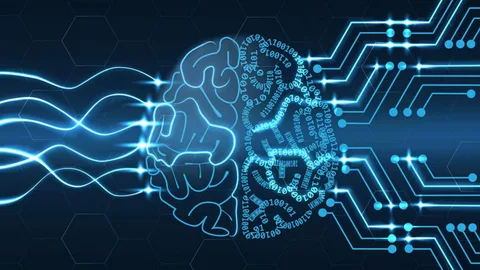Why Detecteur IA is Essential for Content Verification

Introduction:
In today’s digital world, the use of artificial intelligence (AI) has grown rapidly, making it essential to have tools in place to verify and monitor its usage. AI detectors, or detecteur ia in French, are specialized tools designed to detect the presence, influence, or output of AI systems. From text and image generation to automated decision-making, detecteur ia help differentiate between human-created content and AI-generated content, ensuring transparency, reliability, and accountability. This article delves into what AI detectors are, how they work, and why they are crucial in various industries today.
What is an detecteur ia?
A detecteur IA is a tool or software application designed to identify whether a piece of content or a specific action was generated or influenced by artificial intelligence. With the widespread use of AI tools for creating text, images, videos, and even voice synthesis, AI detectors have become invaluable for verifying the authenticity and origin of digital content.
AI detectors utilize complex algorithms and machine learning models to analyze specific characteristics within content. These characteristics, such as sentence structure, style, image pixelation, or speech patterns, help distinguish AI-generated content from human-created material. AI detectors are particularly relevant in fields like education, media, and cybersecurity, where knowing the source of content is vital.
How Do AI Detectors Work?
The technology behind detecteur ia is complex, using advanced machine learning and natural language processing (NLP) techniques to identify subtle patterns unique to AI-generated content. Here are some common methods used by AI detectors:
Natural Language Processing (NLP): For text detection, NLP algorithms analyze language patterns, vocabulary, sentence structure, and tone. AI-written text often follows specific patterns, which can be detected by analyzing variations in sentence structure, coherence, and the predictability of word choice.
Image Analysis: For detecting AI-generated images, detecteur ia examine details like pixel quality, symmetry, and anomalies that might indicate artificial creation. Many AI-generated images have telltale signs, such as unnatural blending of textures or minor inconsistencies in symmetry that a trained model can spot.
Metadata Examination: Some AI detectors examine metadata or digital footprints in files to determine if AI was used. This is particularly useful in detecting deepfake videos or images, where metadata might reveal processing stages typical of AI.
Statistical Analysis: Certain detecteur ia use statistical modeling to compare content with a database of known AI-generated outputs. By identifying anomalies or unusual patterns in data, AI detectors can assess whether a machine-generated the content.
Behavioral Analysis: In cybersecurity, AI detectors might analyze user behavior to determine if an AI-driven bot is controlling an account. By studying actions, response times, and interaction patterns, detectors can flag potential AI involvement.
Applications of AI Detectors
Detecteur ia serve an essential role in various sectors, helping maintain standards and ensuring the integrity of information and digital content. Here are some primary applications:
Education: AI detectors help educational institutions detect AI-written essays, assignments, or exam responses. This ensures academic integrity, as AI-generated responses may misrepresent a student’s actual understanding of the subject.
Journalism and Media: News outlets use AI detectors to verify that articles, images, and videos are genuine, not AI-generated fakes. This helps prevent the spread of misinformation and maintains public trust in reliable news sources.
Cybersecurity: Detecteur ia in cybersecurity identify bot-driven actions, fake profiles, or phishing attempts powered by AI. Detecting AI in this context helps enhance security and prevent data breaches, spam, and fraudulent behavior.
Social Media and Content Moderation: Social platforms use AI detectors to monitor for fake accounts, spam, or inappropriate AI-generated content. This helps maintain a safe environment for users and prevents the spread of misleading information.
Legal and Compliance: AI detectors are used to verify content origins in cases where compliance with regulations is necessary. For example, companies in regulated industries can use AI detectors to ensure transparency in advertising and communications.
The Importance of AI Detectors
As AI becomes more integrated into daily life, the importance of AI detectors continues to grow.
- Maintaining Authenticity: With the rise of AI-generated content, it’s more challenging to distinguish real from fake. AI detectors help maintain authenticity, allowing consumers to trust the information they consume.
- Preventing Misinformation: AI detectors help prevent the spread of misinformation by flagging AI-generated content that could mislead or confuse audiences. This is especially critical in social media and news outlets where accurate information is essential.
- Ensuring Security and Privacy: In cybersecurity, detecting AI-driven bots and malicious AI programs helps protect users and prevent unauthorized access to sensitive data.
- Supporting Ethical AI Use: AI detectors contribute to the ethical use of AI by providing transparency and accountability. They help organizations verify AI’s role in decision-making processes, ensuring AI usage aligns with ethical standards.
Challenges in AI Detection
Despite their benefits, detector de ia face certain challenges. As AI models become more sophisticated, it’s increasingly difficult to detect AI-generated content accurately. For instance:
- Evolving AI Models: Advanced models like GPT-4 and other generative AIs are designed to mimic human-like patterns, making it more challenging for detectors to distinguish AI-generated content from human-generated content.
- False Positives/Negatives: AI detectors can sometimes make errors, leading to false positives or negatives. False positives might flag genuine content as AI-generated, while false negatives fail to identify AI-generated content accurately.
- Privacy and Ethical Concerns: In some cases, AI detectors might access user data, which raises privacy concerns. Balancing detection accuracy with user privacy is an ongoing challenge.
Conclusion
Detecteur ia are vital tools in the modern digital landscape, helping ensure transparency, security, and integrity across various industries. As AI technology advances, the role of AI detectors will continue to evolve, adapting to identify increasingly sophisticated AI outputs. By leveraging AI detection, organizations can maintain trust, protect their data, and promote ethical AI use in an AI-driven world.


